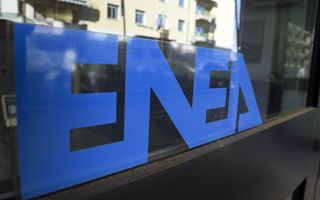(Finance) – I’m coming new high-resolution monitoring and forecasting tools for air quality thanks to the European Copernicus Atmospheric Monitoring Service (CAMS) program, which intends to extend and improve services on a local scale within the CAMS2_72IT_bis project, created in collaboration with ENEA, Ispra (coordinator), CNR-Isac, University of Tor Vergata, Italian Consortium of the Copernicus Academy and 8 ARPA – Regional Agencies for Environmental Protection (Emilia-Romagna, Lombardy, Campania, Liguria, Piedmont, Veneto, Umbria , Valle d’Aosta).
Already today, the CAMS offers a series of advanced tools for monitoring and managing air quality. These include: daily forecasts for up to five days on greenhouse gases, ozone, aerosols and other air pollutants; monitoring of greenhouse gases, including CO2, methane and nitrous oxide, to analyze global trends in concentrations of these gases; atmospheric reanalyses, which provide time series data by combining observations and models, ideal for long-term studies of the evolution of atmospheric conditions; aerosol monitoring, with information on natural dust (such as Saharan dust), anthropogenic aerosols and volcanic ash, also useful for the management of air transport; stratospheric and ozone monitoring, to detect the ozone hole and monitor UV radiation globally; analysis of global pollution events, such as forest fires, dust transport and volcanic emissions, which affect air quality on a large scale
“CAMS is a reference point for monitoring greenhouse gases and aerosols (such as PM, pollen and Saharan dust) at global and European level; thanks to the combination of satellite data and atmospheric models, it offers essential tools to address the challenges related to pollution and climate change,” he explains Antonio Piersanti, rresponsible for the ENEA Laboratory Models and measurements for air quality and climate observations.
“For the next three years our task will be to ‘adapt’ (downscaling in technical jargon) the air quality services provided by the Copernicus system at national, regional and local levels. This means that the data and forecasts on the concentrations of air pollutants developed so far on a global and European scale will become more detailed for our country and will be made accessible to local administrations who will be able to use them to make more informed and conscious decisions for monitoring and pollution management, urban planning and implementation of emissions reduction policies. All this with the aim of protecting citizens’ health and respecting environmental regulations”, he adds Massimo D’Isidoroscientific manager of the project for ENEA.
In detail, ENEA researchers will conduct the downscaling activity of pollutant concentration fields using the ENEA model for air quality forecasts FORAIR-IT, which will continue to operate in parallel with the corresponding forecasting systems of ARPA Emilia-Romagna (kAIROS) and CNR-ISAC (CHIMBO). In order to strengthen collaboration between the institutions that manage the forecasting tools, the three national modeling systems will provide the concentration fields to the ARPAs of Emilia-Romagna, Liguria, Lombardy, Piedmont, Umbria and Veneto, to perform higher resolution forecasts on its territory and evaluate its potential compared to the systems currently applied by ARPA. In the project, ENEA researchers will also study the intrusions of Saharan dust in Italy, a phenomenon that can significantly affect air quality. The activities will concern in particular the comparison between the data observed in the area and the modeling forecasts and the application of one new methodology for the detection of Saharan dust intrusion events through the combined use of models and observations.
ENEA also works with the European CAMS program in the CAMS2_40 – Regional Air Quality Forecast project, where it represents the only Italian partner of the consortium of the 11 air quality forecasting models over Europe.
